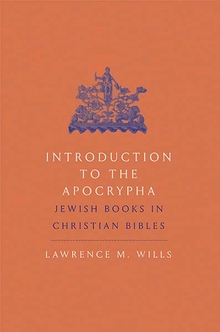Jews in the Greek and Roman Periods
Lawrence M. Wills—
The books of the Hebrew Bible were likely composed in the ninth through second centuries BCE, under a range of very different political conditions. Israel was established as a kingdom by David in about the year 1000 BCE, and his son, Solomon, ruled successfully for about forty years. After that, however, the nation was split by two of his sons, and the north, often called simply Israel, and the south, centered in Judah (where Jerusalem was located), struggled against each other. Both halves were threatened by the surrounding great empires, Egypt and Assyria, and the northern half of Israel was defeated by the Assyrians in 721 BCE. The south, Judah, survived this incursion, but at the turn of the sixth century BCE it was defeated by the new empire on the horizon, the Neo-Babylonians. Responding to further rebellions in Judah, the Babylonians in 589 BCE destroyed the temple and exiled more of Jerusalem’s leaders to Babylon and elsewhere. This was the beginning of the Babylonian Exile. In 539 BCE this empire was in turn defeated by Cyrus of Persia, who created an empire much larger than the previous ancient Near Eastern kingdoms. As Cyrus presented to the world the persona of a benevolent dictator, allowing more local autonomy, Judah found some measure of peace; it was allowed to rebuild the temple. But in 332 BCE a young Alexander the Great led a Greek and Macedonian force that swept through the eastern Mediterranean and Egypt and extended east to include Persia and part of India. He died in the process, and as a result his empire splintered into successor kingdoms. Judah, now called Judea, lay at the boundary between two of these Greek successor kingdoms, the Seleucids in Asia Minor and the Ptolemies in Egypt. Fortune favored first one and then the other, and Judea remained a buffer state between them.
How Judea ceased to be the pawn in this imperial struggle and achieve independence is a compelling story, treated in 1, 2, and 4 Maccabees and texts of the Ethiopian Bible, and that kingdom was “comparable in Jewish history only with the kingdom of David.” Under the Persians, religious worship had remained a matter of local custom, generally protected by the benign paternalism of the imperial rulers. But the form of Hellenization in Syrian-ruled areas imposed a new kind of local administration. Greek colonization, coupled with the philosophical ideals of a universal world order, called for a more thorough transformation of local customs. Greek cities founded colonies or reconstituted older cities by imposing the nomima, laws and customs, of the parent city. These included laws and a constitution, rituals, and a religious calendar. A dēmos, or roll of citizens, was established; a boulē or city council of aristocratic leaders was appointed; and a gymnasium and ephēbeum were constructed for the education of elite boys. A universal Greek education would ensure the inculcation of Greek values, and even native texts became increasingly modeled on Greek literature.
Hellenization proceeded quickly and successfully as a policy because it required changes on the public and constitutional levels, while allowing native customs to be observed on a private level. Some cities willingly embraced such a reconstitution, for instance, Samaria (the heirs of the northern half of Israel) to the north of Jerusalem. But whereas Samarians and Phoenicians in general were more willing to allow a mixing of religious symbols with Greek culture, Jews retained tighter boundary markers and did not bifurcate public and private practices to the same extent. The Maccabean Revolt (167–160 BCE) established the independence of Judea from the Seleucids, and the leaders of this revolt, the Hasmonean family—sometimes nicknamed “Maccabee”—established their positions first as high priests and then as kings. Many of the Jewish texts of this period either supported this new power structure in Jerusalem or opposed it. In Egypt, however, the large Jewish community remained under Ptolemaic control; some of the important texts of the period were composed there. There are thus two geographical zones for the texts (or three, if some of them were composed farther east) and three different languages: Hebrew, Aramaic, and Greek. In the first century BCE, the Greek successor states were pushed aside as Rome began its rise to dominance. When the Romans expanded their control over the eastern Mediterranean, they focused their sights on Judea as well. In 63 BCE, the Roman general Pompey easily defeated the Judean defenses of Jerusalem. True Hasmonean independence came to an end, although Jewish puppet kings and high priests were allowed to serve at the pleasure of Rome.
This short survey makes it clear that Israel continued to live out a boundary consciousness as a buffer state or province among the great empires—Egypt, Assyria, Babylonia, Persia—and on the boundary between the Greek successor states of the Seleucids and Ptolemies. Under Rome Judea was at times a vassal kingdom and at times a province; either way it stood once again at the boundary between the Roman Empire and the non-Roman East. A continuous history at the boundaries, or as a separate people within an empire, thus characterized Jewish consciousness, and this is reflected in the Apocrypha.
From Introduction to the Apocrypha by Lawrence M. Wills. Published by Yale University Press in 2021. Reproduced with permission.
Lawrence M. Wills is visiting professor of Religious Studies and Judaic Studies at Brown University. His books include a commentary on Judith in the Hermeneia series, Not God’s People: Insiders and Outsiders in the Biblical World, and The Jewish Novel in the Ancient World.
Further Reading:



























